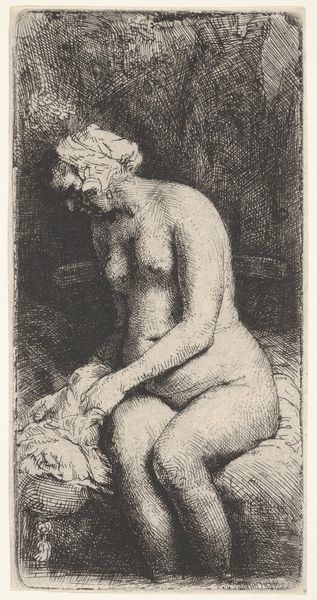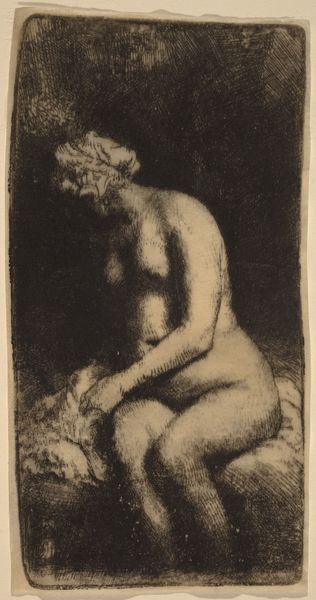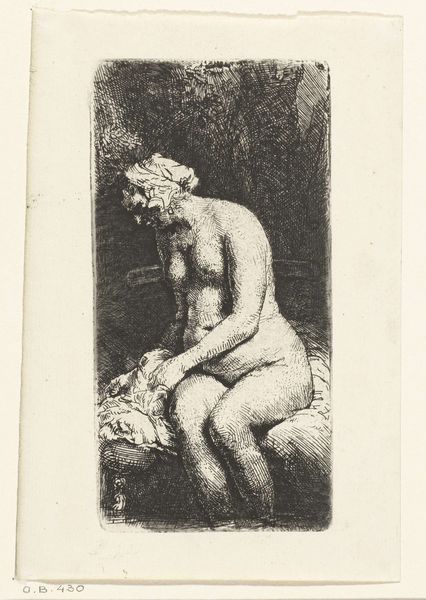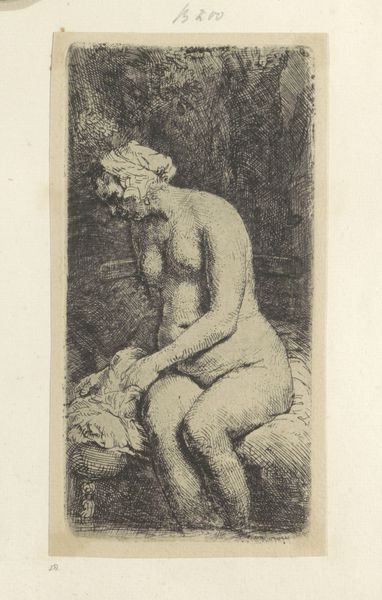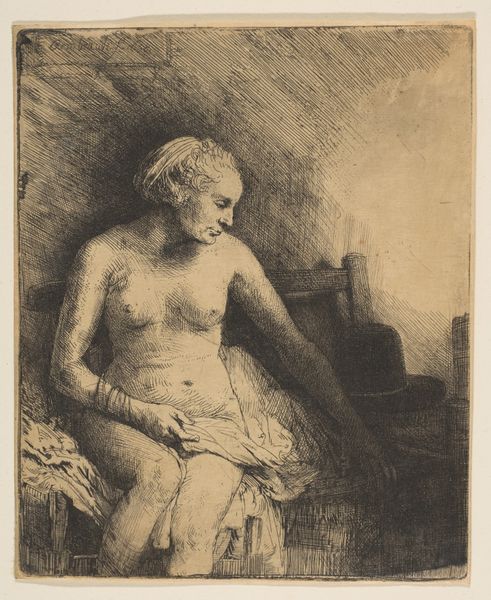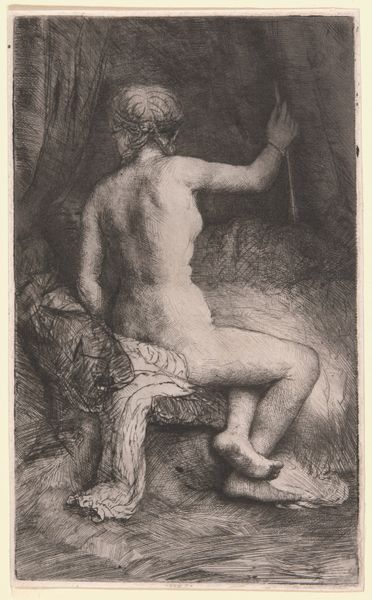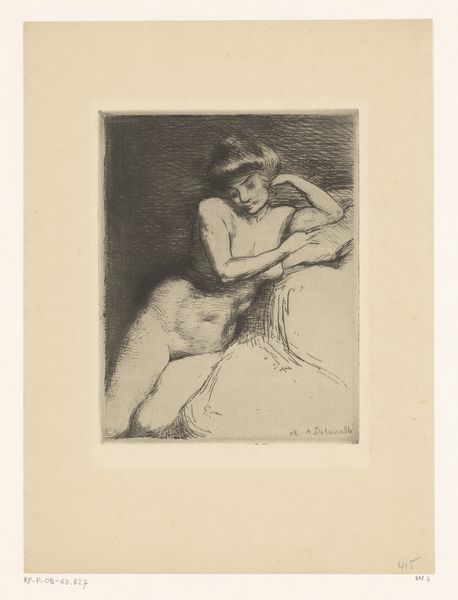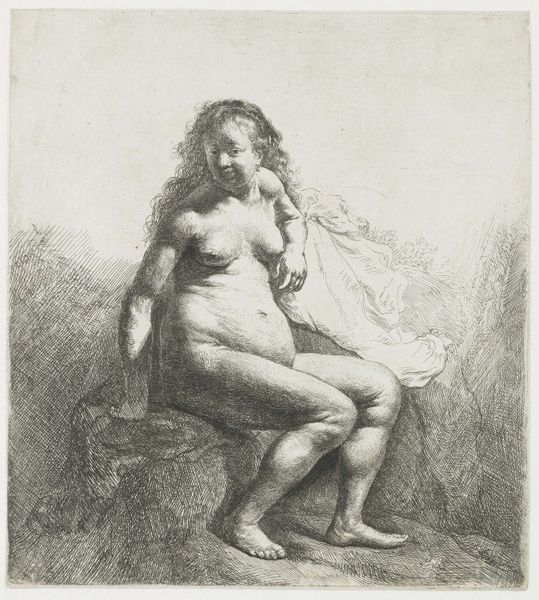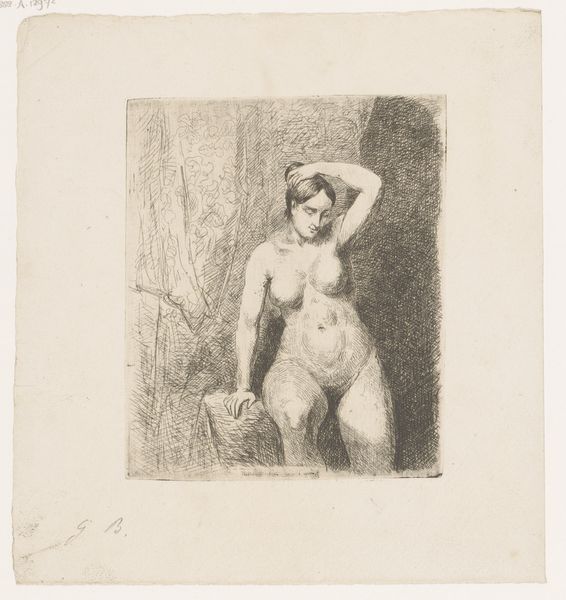
drawing, print, etching
#
drawing
#
baroque
#
dutch-golden-age
# print
#
etching
#
figuration
#
form
#
female-nude
#
line
#
genre-painting
#
nude
#
male-nude
Dimensions: Sheet (Trimmed): 6 7/16 × 3 1/16 in. (16.3 × 7.8 cm)
Copyright: Public Domain
Curator: Today, we’re looking at Rembrandt van Rijn's etching, "Woman Bathing Her Feet at a Brook," created in 1658. It's currently housed at the Metropolitan Museum of Art. Editor: The light is amazing, especially considering it's an etching. There's such a vulnerability in that hunched pose and downcast gaze. The dark shading really adds to the contemplative mood. Curator: Etching was a crucial method for disseminating imagery in 17th century Europe. Rembrandt explored how acid interacted with metal plates and how varying pressure affected the darkness and texture of lines. What looks simple now involved complex control. The paper itself tells a story of production. Editor: Absolutely, and let’s think about what the image itself evokes. Bathing and washing feet are symbolically rich, right? From purification rituals in religion to common acts of service in the Bible and other traditions. Rembrandt wasn't simply capturing a scene. He was tapping into this deep well of cultural understanding surrounding cleanliness and vulnerability. Curator: But consider the audience and the economics of the time. Etchings like these weren’t mass-produced as we understand it. Each print run created differences, subtle variations that made individual works valuable in a society grappling with new forms of capital. Each copy sold meant resources. Editor: True, and the lack of idealization here is important too. This isn’t some mythological goddess. It's a very human, everyday scene, capturing this image. It feels intimate. Curator: He’s certainly exploring the tension between the real and the representational through that raw imagery, challenging conventional perceptions. Editor: Examining how symbols are repurposed is my primary concern, how we connect through centuries and cultures using simple acts. Even today, bathing is connected to rejuvenation and care. Curator: Indeed, tracing its production methods contextualizes its artistic message. Rembrandt understood that those technical elements influenced viewers and economics of his work, while speaking on history as well. Editor: Rembrandt's able to convey timeless feelings and symbols about personhood through simple imagery like washing. Curator: Ultimately it is a fascinating image speaking across eras through the skill used to reproduce that moment onto something to be sold, bought, and possessed.
Comments
No comments
Be the first to comment and join the conversation on the ultimate creative platform.
